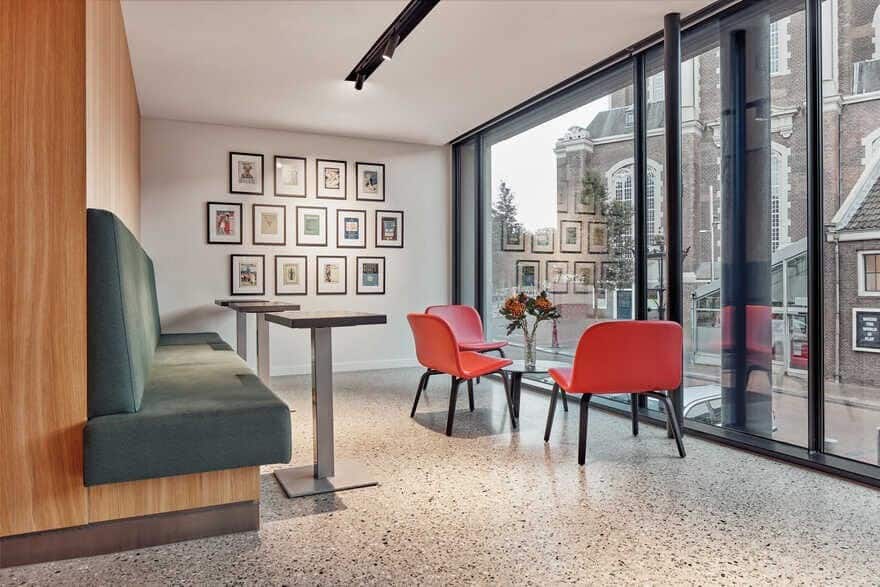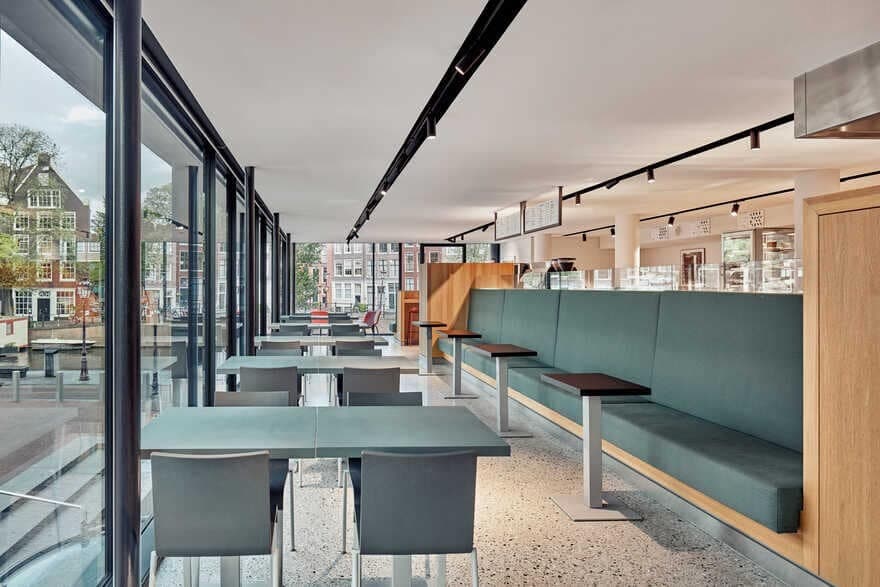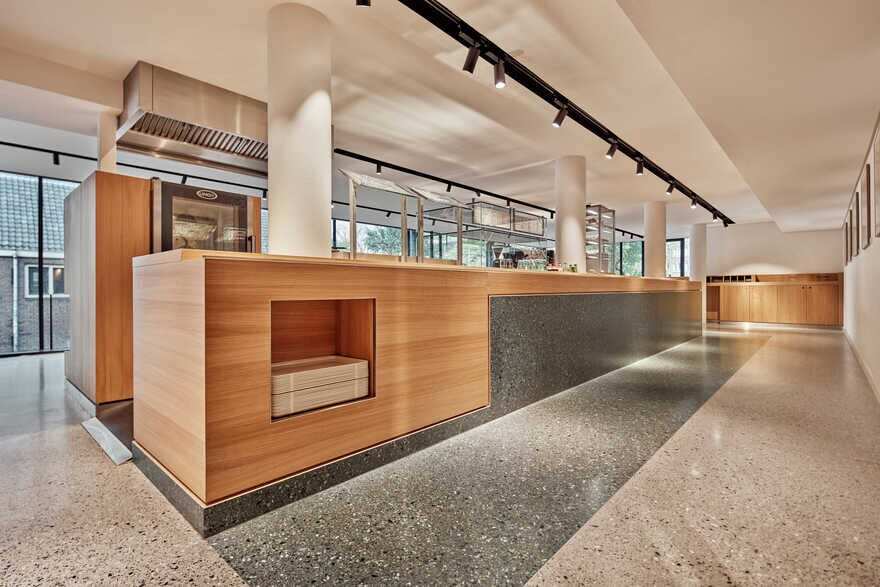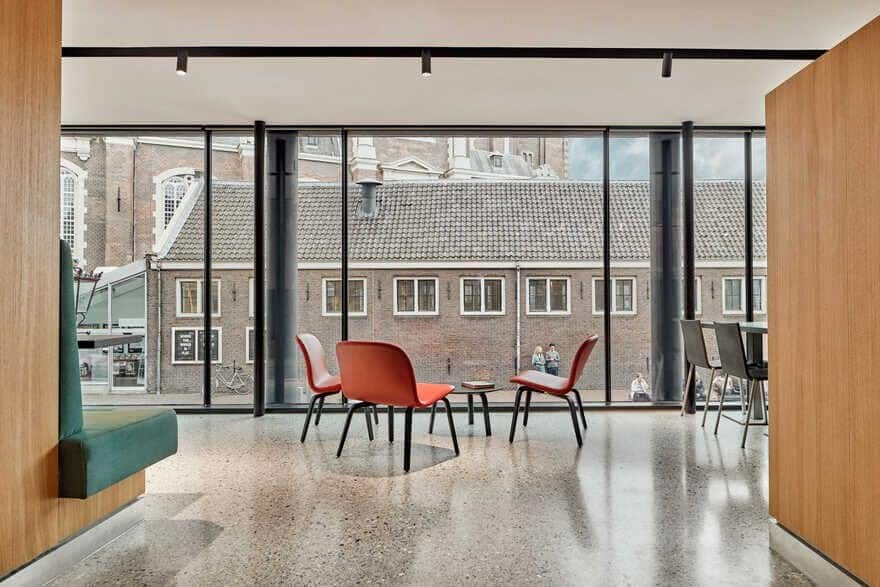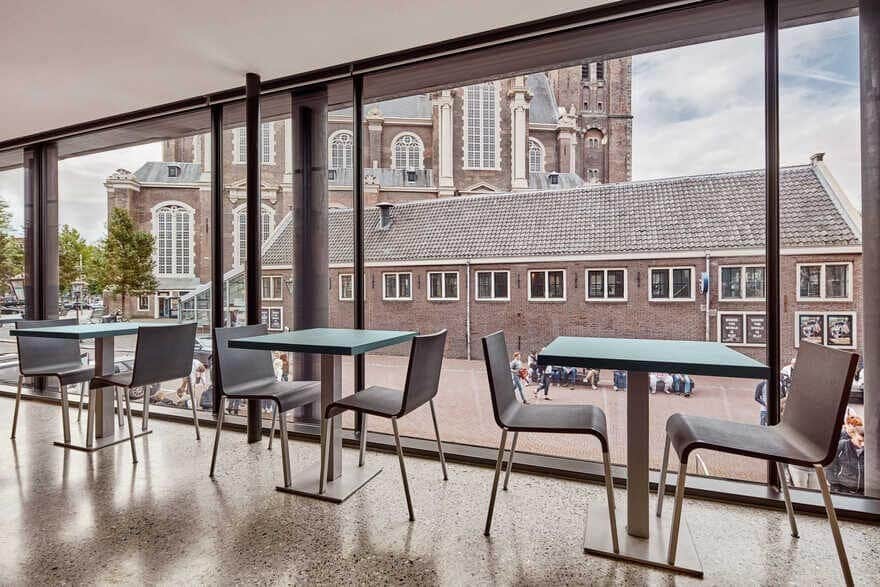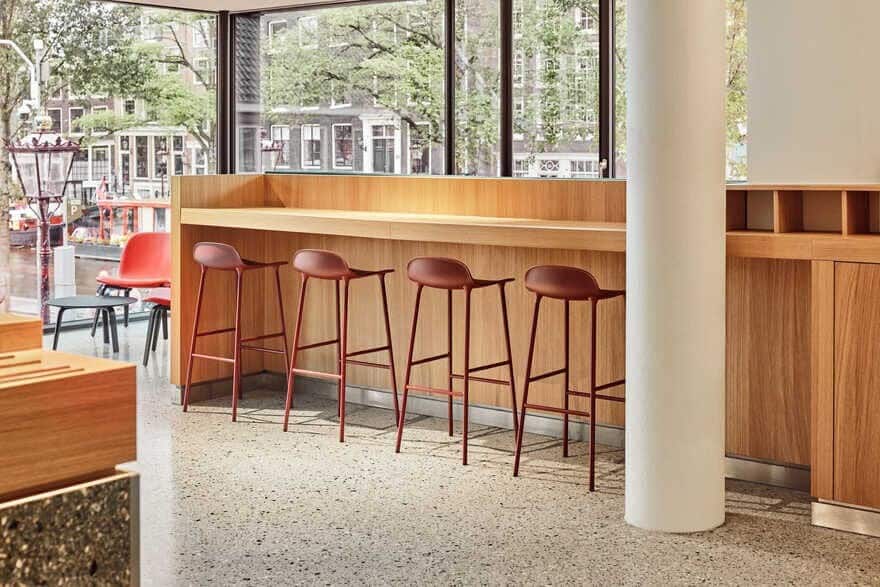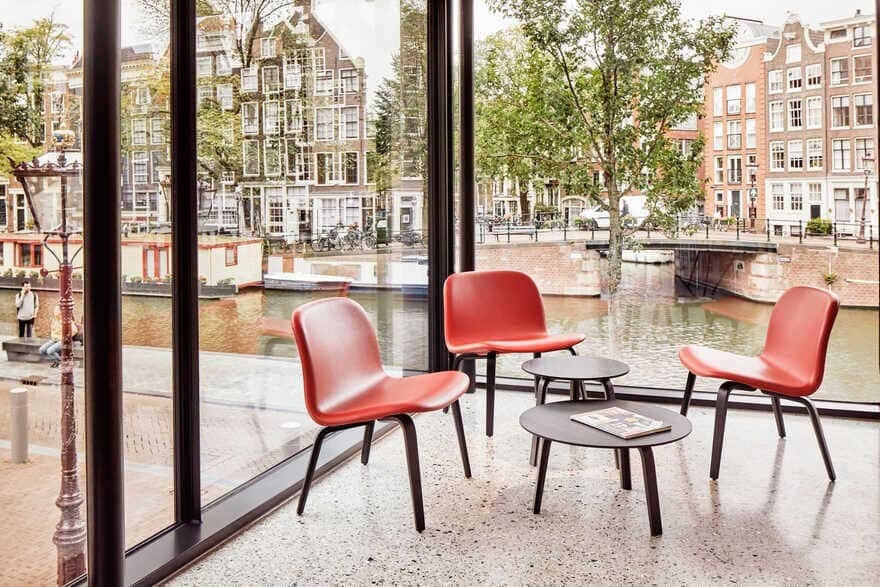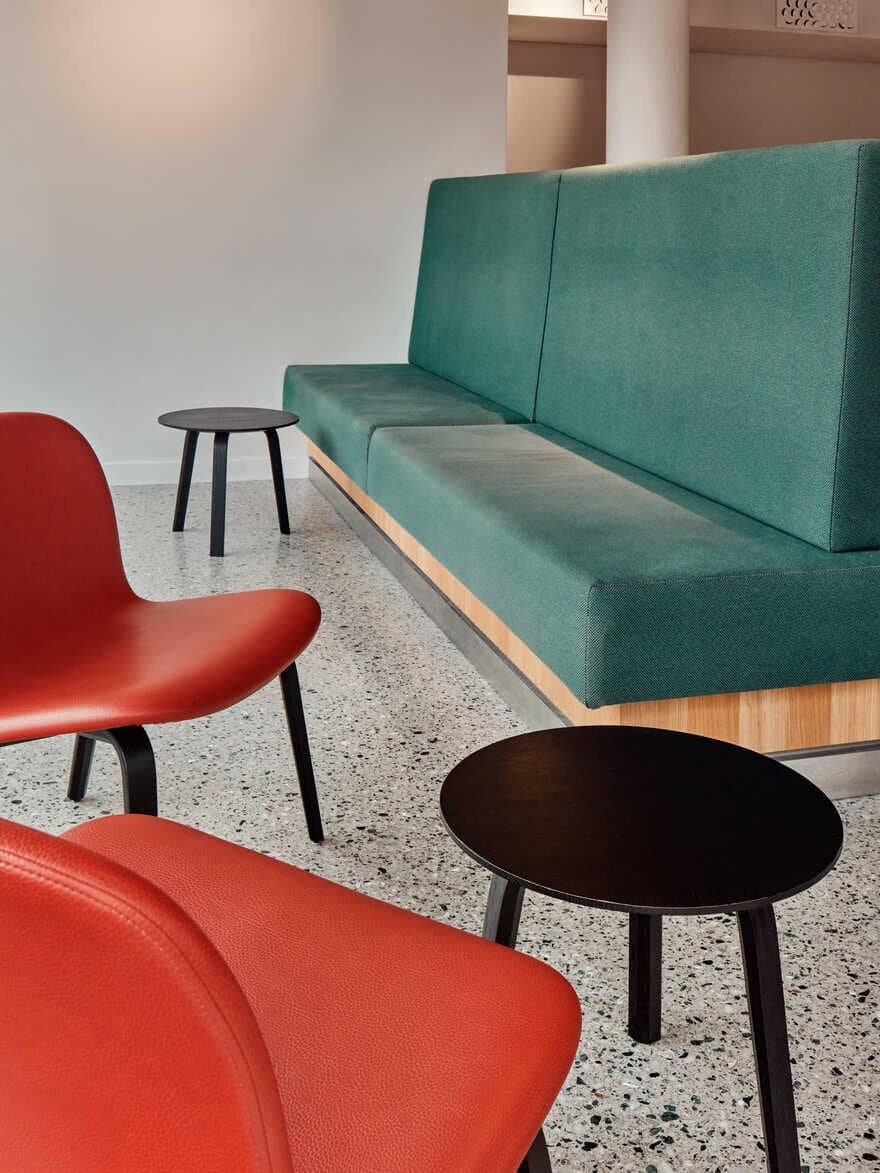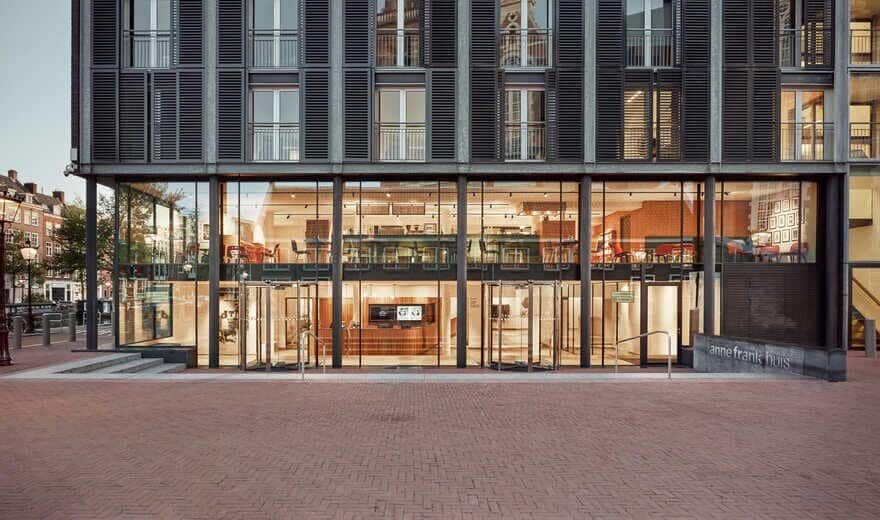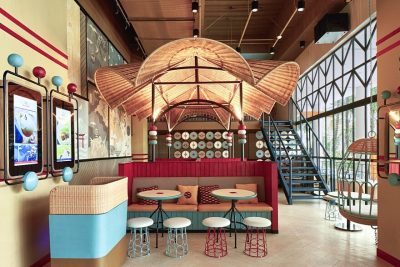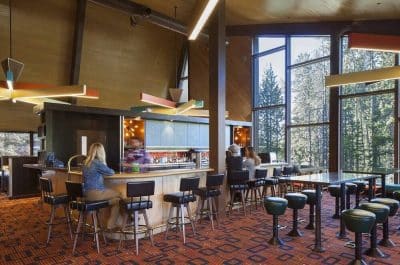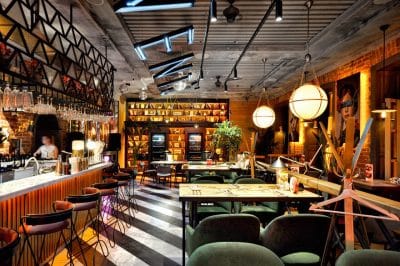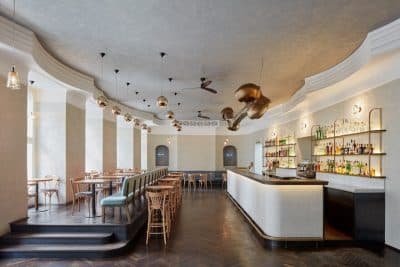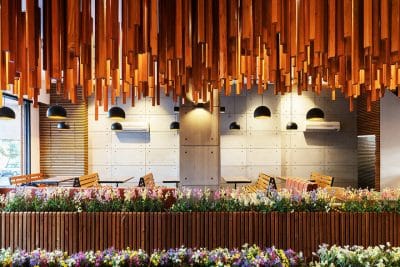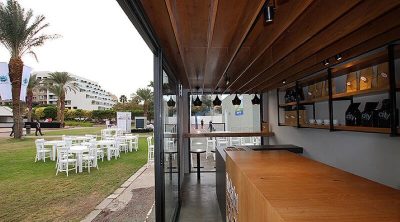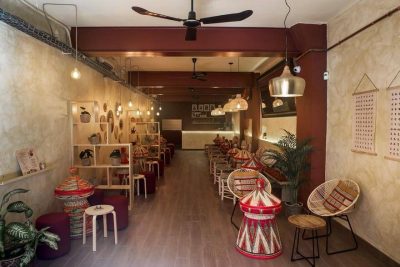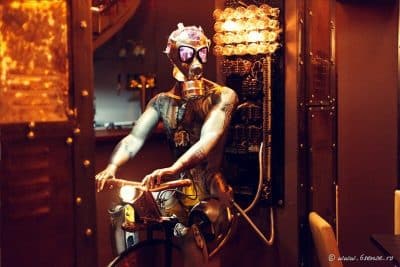Client: Anne Frank Stichting
Project:Anne Frank House Museum Cafe
Design: Namelok, Rotterdam, the Netherlands
Contractor: Gielissen (interior) / Salverda (general)
Location: Amsterdam, the Netherlands
Year: 2016 – 2019
Status: completed
Size: 250 sqm
Photography: Maarten Willemstein
Namelok completes Anne Frank House Museum Cafe: a balanced design for rush and reflection.
Rush and reflection are the two contradictory vital elements on which Namelok has based the entire design of the museum cafe in the Anne Frank House. Of course, we were inspired by the place’s history: especially the post-war period in which the desire for rapid improvement was in contrast to the pure fellowship. This paradox has not only functioned as our core design concept, but also in facilitating the visitors of the Anne Frank House.
Our research showed that visitors of the Anne Frank House experience a sudden transition from history to the present on the one hand, while on the other, they feel the need to reflect on the impact of ‘the secret annexe’. The large 9-meter long bar is a multifunctional object in the middle of the cafe, aligned with the row of columns in the middle of the room. In front of the bar, the atmosphere is dynamic – here, rushed visitors have the opportunity to buy some to-go products before they get back into the hustle and bustle of the center of Amsterdam. The backside of the bar is much quieter – visitors can enjoy the view of the Westerkerk, relax, and take a seat on various types of furniture. Lounge seats alternate with dining tables and wall benches to accommodate all visitors.
The subdued design fits in the story of the Anne Frank House. However, that does not mean that the design can’t be something special. Layers of carefully assembled grey and green terrazzo that connect the different elements make up the design. The meters long stone front of the display bar features a unique casting of dark green terrazzo enriched with grey Dutch river stones. This terrazzo extends into the floor surface, but then changes to an inverted alternative: green marbles in a grey concrete base. The application of a lot of large areas of warm oak and different fabric textures completes the collage of materials. The natural textiles were used in many different ways in the post-war period when scarcity arose. The textures have a warm and domestic feel and subtly communicate this within the design.
In our research into the post-war period of the Jewish history in Amsterdam, we used the photos from the series ‘Jews of Amsterdam’ by the American photographer Leonard Freed. His photos yielded an enormous amount of documentation and a wealth of stories, which have given the project a broad historical context and deeper meaning. As a result, we realized that the image of the future-looking community, that Freed’s photos evoke, contained yet another reality that did not show itself to the outside world: that of the invisible emotional world of still-worn sorrow and the suppressed memories of war, which would only be discussed many years after.
Besides the museum cafe, in 2018, the museum has been thoroughly modified to the design of BiermanHenket. Our design for the museum cafe has been part of this transformation.

